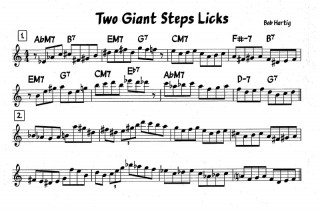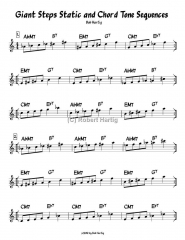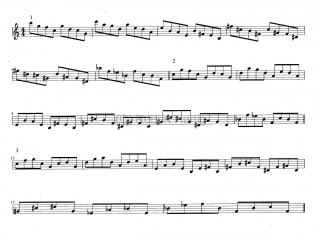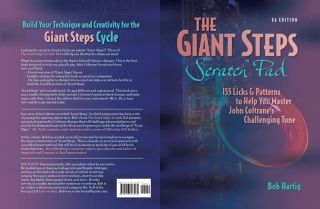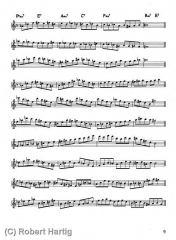Lately, my book The Giant Steps Scratch Pad has enjoyed a modest spate of sales. I appreciate that musicians take an interest in it. On my part, it was a labor of love, and it’s gratifying when you, my readers, find it worthwhile enough to shell out your hard-earned cash to obtain a copy. Every purchase is a shot of morale for me, not to mention a nice dent in my electric bill.
As a way of saying thanks, I thought I’d share with you a couple of favorite new Giant Steps licks that I’ve been practicing. They correspond to the A section of Giant Steps’ A-B form and have a bebop flavor to them.
Since I’m an Eb alto saxophonist, I’ve written the licks out for my instrument. C, Bb, F, and bass clef instruments will need to transpose accordingly. ‘Nuff said. Without further ado, here are the licks. Click on the image to open and enlarge it.
